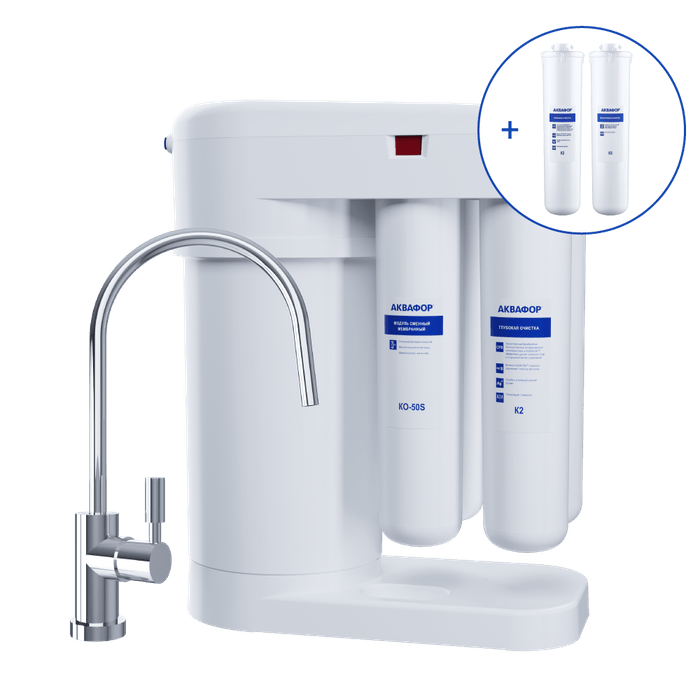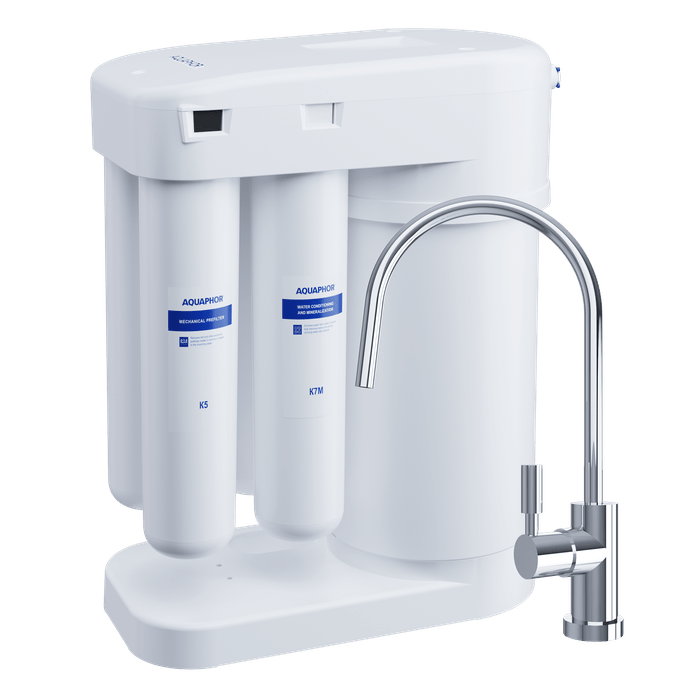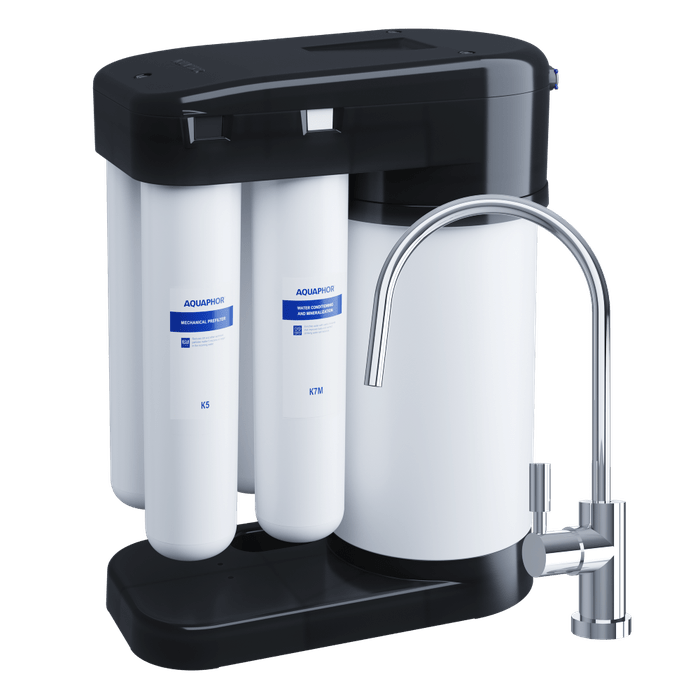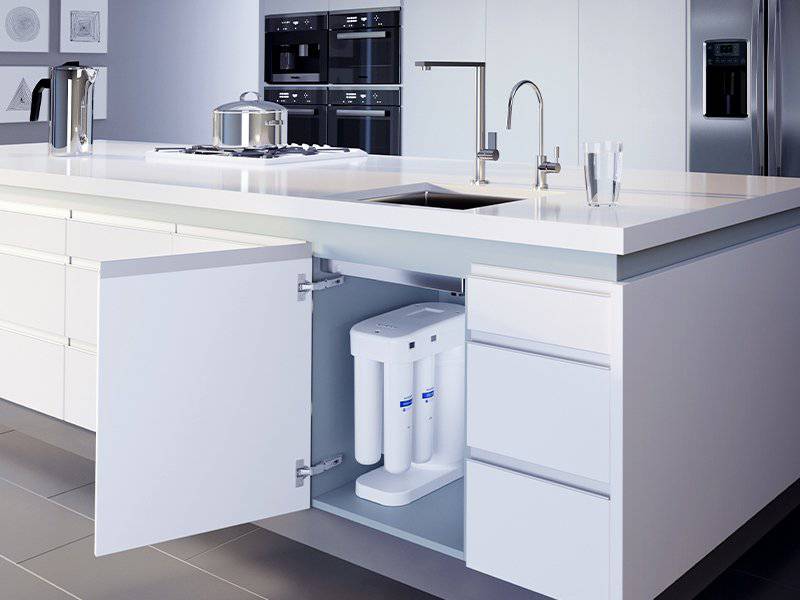 ENGLISH
ENGLISH
 ENGLISH
ENGLISH
 Aquaphor RO-101S + K2, K5
Aquaphor RO-101S + K2, K5
A versatile reverse osmosis system that relieves your water from contaminants and enriches it with healthy minerals.
 RO-101S
RO-101S
A versatile reverse osmosis system that relieves your water from contaminants and enriches it with healthy minerals.
 RO-102S
RO-102S
A versatile reverse osmosis system that relieves your water from contaminants and enriches it with healthy minerals.
Reverse osmosis is the most modern and efficient water treatment technology. To understand how it works, you need to know the processes beneath it.
Osmosis (Greek “osmós”, meaning “push”) is the basis of metabolism in the living organisms: cells absorb water molecules through the walls, which are semipermeable membranes. Water passes from a less concentrated solution (extracellular fluids) to a more concentrated one inside the cell (intracellular fluids).
Accordingly, reverse osmosis is a reverse process: water flows from a more concentrated solution to a less concentrated one through the same membrane. Since this process is opposite to the natural mechanism, pressure must be applied: that’s where the most advanced filtration method begins.
The pipeline pressure pushes the water through the membrane. It does not “validate” anything except water, so harmful impurities and hardness salts are captured by its surface to be drained away afterwards.
Regardless of the design, water treatment in such systems follows the same pattern:
Standard reverse osmosis systems have a number of cons:
All these shortcomings are fixed in the AQUAPHOR RO series.

You need to choose a filter depending on your drinking water challenges. The composition of tap water is predictable, but as for well water, it is better to take a sample in the laboratory.
The main mission of any filter is to purify water from toxic pollutants. The effective solution are both adsorption and RO filters, the latter being the most progressive way to eliminate any impurities.
If the water is hard and the main challenge is to get rid of scale, flow-through filters with the softening ion exchange cartridge would be a good choice. However, if the water is too hard, you’ll have to regenerate the ion exchange cartridge too often. In this case, the reverse osmosis filter would be the best solution.
AQUAPHOR specialists will be happy to answer any of your questions to help you choose a proper filter.
It all depends on the manufacturer and the model. In the AQUAPHOR filters, the life of the pre-filtration cartridges in RO systems is approximately 6 months: the worse the quality of the incoming water, the less the service life.
It is very important to change them on time so that the membrane is not damaged by large particles or chlorine and lasts 1.5-2 years as intended.
Mineralization cartridges serve approximately 1 year.
No, that's a myth. Minerals are indeed removed during the filtration process along with harmful impurities, but the dolomite contained in the mineralization cartridge enriches the water with the necessary quantities of magnesium and calcium. And remember: the primary source of mineral salts is food.
Even if the water is very hard, its mineral content is insignificant, compared to the daily demand — hardly more than 1 g/L, which is a micro fraction of what our body needs. Purified water is mineralized mainly to ensure the usual pleasant taste.